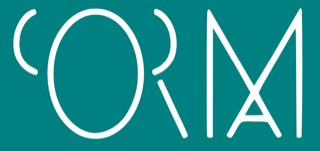CORMA
COntrollo Rumore MArino
OGS is a Partner of the CORMA (MArino Noise Control) project which, as a research and development project in the field of Maritime Technologies, is co-financed by the European Regional Development Fund. The project activities are part of one of the priorities of the Regional Operational Program, under the Objective named «Investment for growth and employment» 2014-2020 also known as Axis 1 – “Strengthening research, technological development and innovation”, Action 1.3 – “Support for collaborative R&D activities for the development of new sustainable technologies, new products and services”.
Underwater world has been commonly taught as a silent place , but it is actually characterized by numerous sounds released by different sources, some natural, such as marine organisms, waves, rain, settling of the seabed and others generated by human activities, which are increasingly disturbing and invasive. Noise waves propagate for kilometers in a fluid and, therefore, a single source, such as a great ship, can affect a large part of the underwater biosphere, making it difficult to understand the complexity of the anthropic impact on marine ecosystem. .
Indeed, an excessively noisy underwater environment confuses animal’s sense of direction, as well as the hunting and defense instincts and finally affects the reproduction processes, triggering the spread of less effective generations, weaker in hunting and often more vulnerable to diseases.
Globalization and the explosion of mass consumption are increasing the number of carriers that move goods around the globe, and marine traffic has double-digit increased in recent decades. However, it is complex to assess the anthropogenic impact of increasing naval volumes on the marine ecosystem, which hosts larger and larger vessels. The vastness of water bodies coupled with the difficult nature of undersea measurements and the impossibility of gathering low-cost underwater noise data in a short time and, at a constant rate , are the major weakness of single measurement campaigns. Indeed, the classical approaches allow gathering localized data, sporadically acquired mostly with limited temporal continuity. A new paradigm is needed to maximize the efficiency of newly developed technologies.
And here it’s where Corma became effective: a low-cost sound recording system, which is not only able to detect and transmit underwater sound coefficient in real-time. Indeed, acquired data are processed through a complex and sophisticated mathematical model, which intercepts the position of great ships (equipped with AIS Automatic identification System), acquires the type of noise and creates a sound propagation model in the water body by considering also the seabed depth and morphology . The outputs of the model are merged in an innovative dash board, which immediately shows, also on a historical basis, the underwater noise gradient, stratified in different depth ranges, and allows the operators to have a timely and realistic picture of what is happening under water.
DURATION OF THE PROJECT: 30 months ADMITTED EXPENDITURE: € 1,199,966.38 CONTRIBUTION GRANTED: € 860,897.02 PARTNER: Cergol Engineering Consultancy s.r.l. (Lead Partner), Transpobank s.r.l. and National Institute of Oceanography and Experimental Geophysics-OGS.
Info


